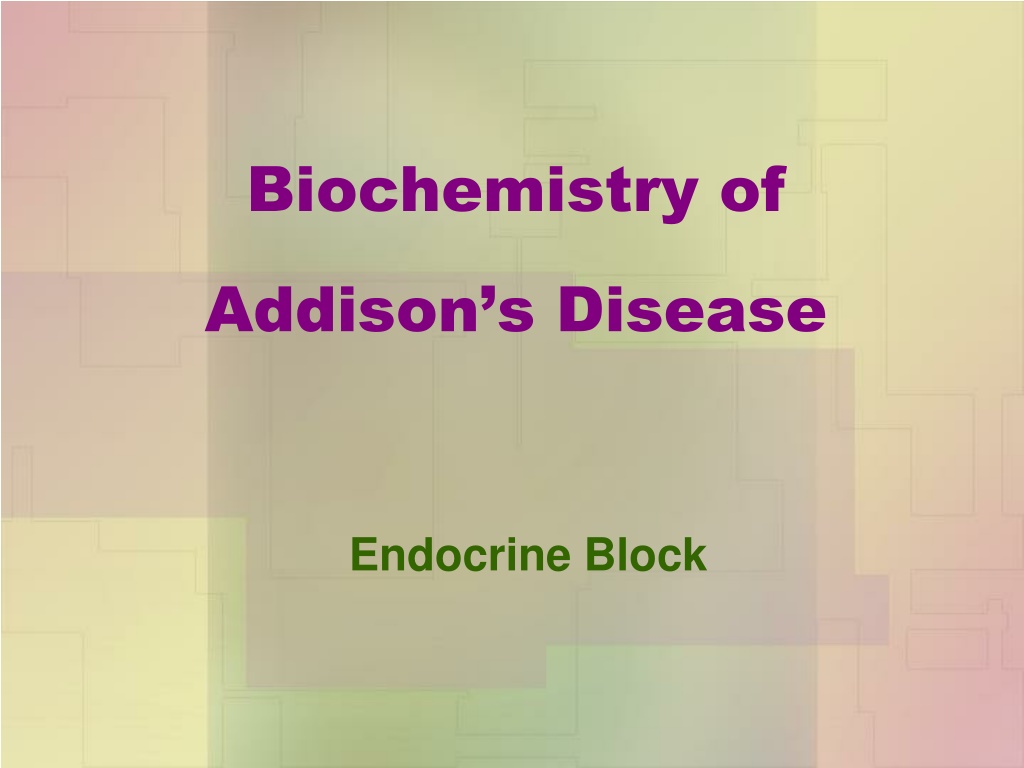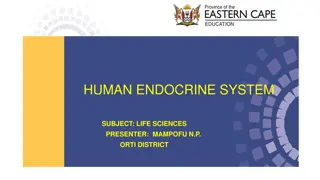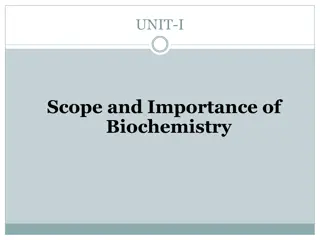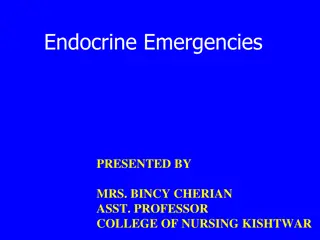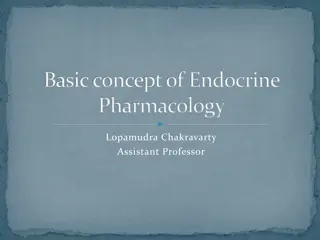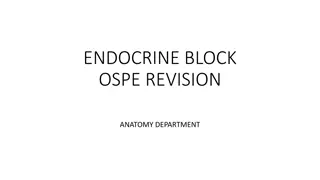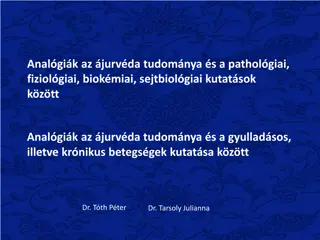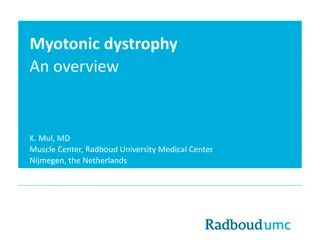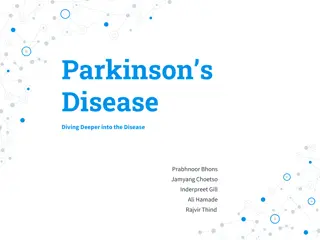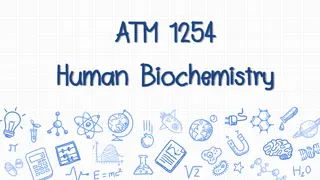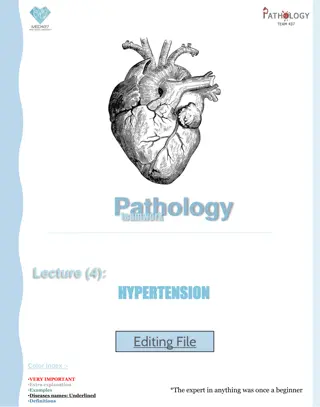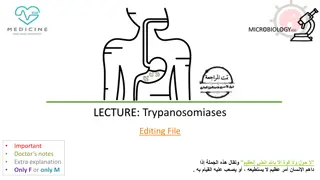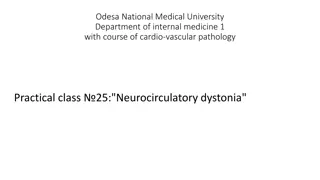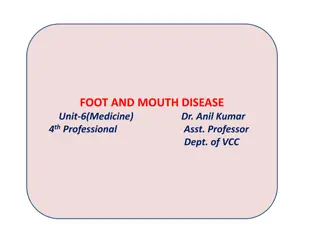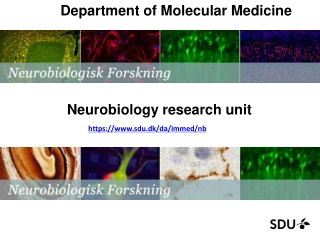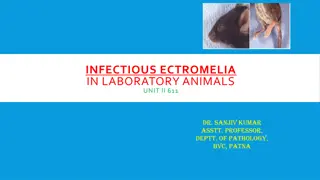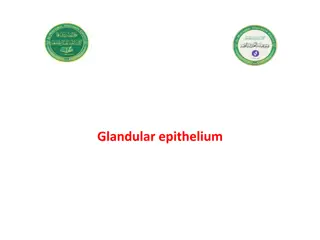Understanding the Biochemistry of Addison's Disease in the Endocrine System
Addison's Disease, a primary adrenocortical hypofunction, involves the adrenal gland's cortex and its hormone synthesis. The condition affects aldosterone and cortisol production, impacting electrolyte balance and blood pressure regulation. Learn about the anatomical and histological aspects of the adrenal gland, steroid hormone synthesis, and the role of aldosterone in sodium and water balance via the Renin-Angiotensin system.
Download Presentation

Please find below an Image/Link to download the presentation.
The content on the website is provided AS IS for your information and personal use only. It may not be sold, licensed, or shared on other websites without obtaining consent from the author. Download presentation by click this link. If you encounter any issues during the download, it is possible that the publisher has removed the file from their server.
E N D
Presentation Transcript
Biochemistry of Addison s Disease Endocrine Block
Objectives To identify different causes of primary adreno- cortical hypofunction (Addison s disease) To identify secondary causes of adreno-cortical hypofunction To understand the diagnostic algorithm for adreno-cortical hypofunction To understand the interpretation of laboratory tests of adreno-cortical hypofunction
ANATOMICALLY: ANATOMICALLY: The adrenal gland is situated on the anteriosuperior aspect of the kidney HISTOLOGICALLY: HISTOLOGICALLY: The adrenal gland consists of two distinct tissues of different embryological origin, the outer cortex and inner medulla.
The adrenal cortex comprises three The adrenal cortex comprises three zones based on cell type and function: zones based on cell type and function: Zona Glomerulosa The outermost zone aldosterone (the principal mineralocorticoid). The deeper layers of the cortex: Zona Fasciculata glucocorticoids mainly cortisol (95%) Zona Reticularis Sex hormones
Steroid Hormone Synthesis Cholesterol (27C) Pregnenolone (21C) 3- -Hydroxysteroid dehydrogenase Progesterone (21C) 17- -Hydroxylase 17- -Hydroxyprogesterone (21C) 21- -Hydroxylase 11-Deoxycorticosterone (21C) Androstenedione (19C) Peripheral tissues 11-Deoxycortisol (21C) 11- -Hydroxylase Corticosterone Testosterone (19C) Estradiol (18C) Aldosterone (21C) Cortisol (21C)
Aldosterone Aldosterone Hormone Hormone The principal physiological function of aldosterone is to conserve Na+, mainly by facilitating Na+ reabsorption and reciprocal K+ or H+ secretion in the distal renal tubule. aldosterone is a major regulator of water and electrolyte balance, as well as blood pressure.
Aldosterone, by acting on the distal convoluted tubule of kidney, leads to: potassium excretion sodium and water reabsorption Renin-Angiotensin system is the most important regulatory mechanism for aldosterone secretion
The The renin renin - - angiotensin angiotensin system system It is the most important system controlling aldosterone secretion. It is involved in B.P. regulation. Renin: Renin: a proteolytic enzyme produced by the juxtaglomerular cells of the afferent renal arteriole. Sensitive to B.P. changes through baroreceptors released into the circulation in response to : a fall in circulating blood volume. a fall in renal perfusion pressure. loss of Na+.
Angiotensinogen ( 2-Globulin made in the liver) Renin Renin Angiotensin I ACE ACE Aldosterone sec. Angiotensin II Degraded Renin release Angiotensin III Vasoconstriction B.P B.P
Causes of Causes of adrenocortical adrenocortical hypofunction A. Primary AC hypofunction (destruction of adrenal gland, Addison s disease): Autoimmune Infection, e.g., tuberculosis Infiltrative lesions, e.g., amylodosis hypofunction (AC) (AC) B. Secondary AC hypofunction: Pituitary tumors Vascular lesions Head trauma Hypothalmic diseases Iatrogenic (steroid therapy, surgery or radiotherapy)
Signs and symptoms of primary Signs and symptoms of primary adrenal failure (Addison s disease) adrenal failure (Addison s disease) The symptoms are precipitated by trauma, infection or surgery: Lethargy, weakness, nausea & weight loss. Hypotension especially on standing (postural) Hyperpigmentation (buccal mucosa, skin creases, scars) Deficiency of both glucocorticoids and mineralocorticoids Hypoglycemia, Na+, K+ and raised urea Life threatening and need urgent care.
Hyperpigmentation Hyperpigmentation in Addison s disease Addison s disease Hyperpigmentation occurs because melanocyte- stimulating hormone (MSH) and (ACTH) share the same precursor molecule, Pro- opiomelanocortin (POMC). The anterior pituitary POMC is cleaved into ACTH, -MSH, and -lipotropin. The subunit ACTH undergoes further cleavage to produce -MSH, the most important MSH for skin pigmentation. In secondary adrenocortical insufficiency, skin darkening does not occur. in
Investigation of Addisons disease (AD) The patient should be hospitalized Basal measurement of: Serum urea, Na+, K+ & glucose Serum cortisol and plasma ACTH Definitive diagnosis and confirmatory tests should be done later after crisis.
Investigation of Addisons disease (AD) Cont d Normal serum cortisol and UFC does not exclude AD. Simultaneous measurement of cortisol and ACTH improves the accuracy of diagnosis of primary adrenal failure: Low serum cortisol ( <200nmol/L) and High plasma ACTH (>200 ng/L)
Confirmatory Tests 1. Short tetracosactrin (Synacthen) test (Short ACTH stimulation test) Measure basal S. cortisol Stimulate with I.M. synthetic ACTH (0.25 mg) Measure S. cortisol 30 min after I/M injection Normal: of S. cortisol to >500 nmol/L Failure of S. cortisol to respond to stimulation, confirm AD. Abnormal results: emotional stress glucocorticoid therapy estrogen contraceptives.
Confirmatory Tests Cont d 2. Adrenal antibodies Detection of adrenal antibodies in serum of patients with autoimmune Addison s disease 3. Imaging (Ultrasound/CT) Ultrasound or CT for adrenal glands for identifying the cause of primary adrenal failure
Investigation of Secondary AC Insufficiency Low serum cortisol with low plasma ACTH No response to short synacthen test: Adrenocortical cells fail to respond to short ACTH stimulation Depot Synacthen test (confirmatory test) 1. Measure basal S. cortisol 2. Stimulate with I.M. synthetic ACTH (1.0 mg) on each of three consecutive days 3. Measure S. cortisol at 5 hours after I.M. injection on each of the three days
Investigation of Secondary AC Insufficiency Depot Depot Synacthen Synacthen test . Cont d Interpretation of results: test . Cont d - Addison s disease: No rise of S. cortisol >600 nmol/L at 5 h after 3rd injection. - Secondary AC: Stepwise increase in the S. cortisol after successive injections - Limitations: Hypothyroidism: Thyroid deficiency must be corrected before testing of adrenocortical functions Prolonged steroid therapy
Investigation of Secondary AC Insufficiency . Cont d Other Investigations Other Investigations Insulin-induced hypoglycemia: Adrenal failure secondary to pituitary causes MRI for pituitary gland
Investigation for Addisons disease Basal plasma ACTH and basal serum cortisol, glucose, urea and electrolytes High ACTH and Low cortisol Screening Short ACTH stimulation test: No response Confirmation Adrenal autoantibodies Ultrasound/CT adrenal glands Others
Investigation for Secondary AC Insufficiency Screening Low ACTH and Low cortisol Long ACTH stimulation test: Stepwise increase in S. cortisol Confirmation Insulin-induced hypoglycemia MRI pituitary gland Others
